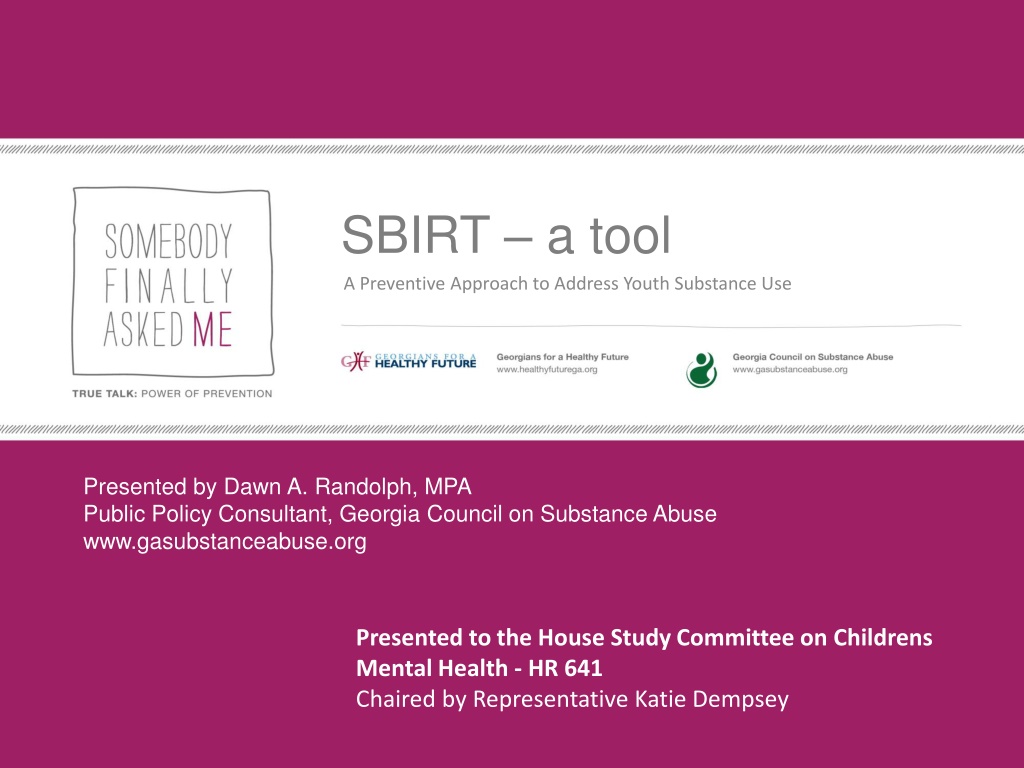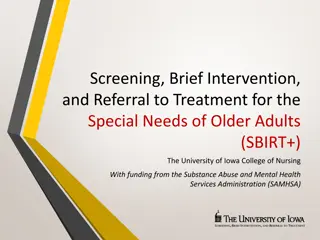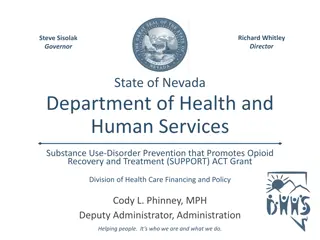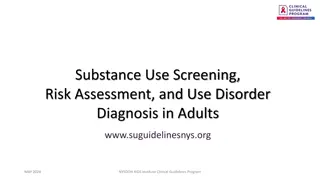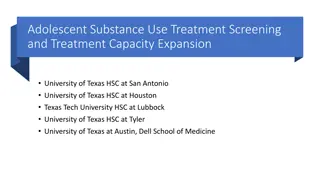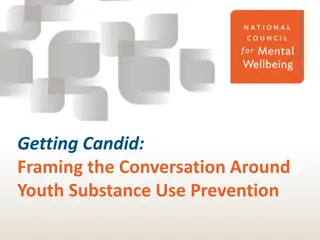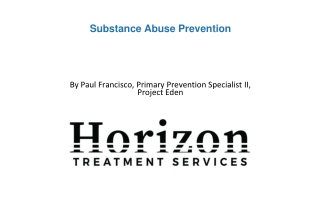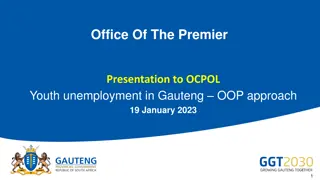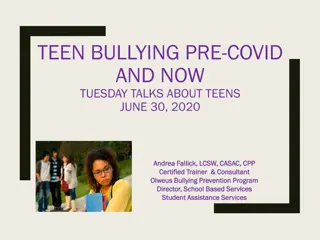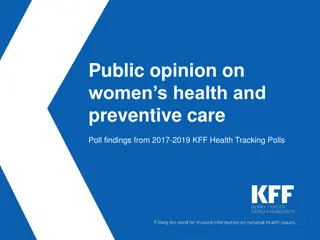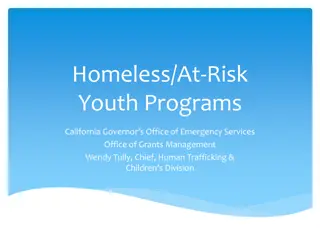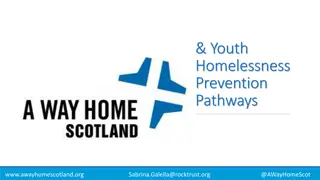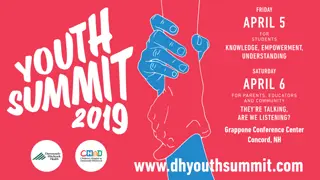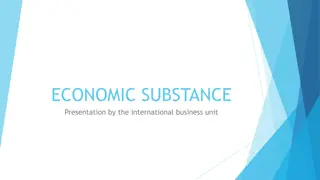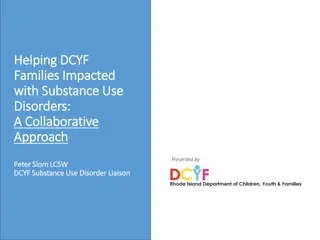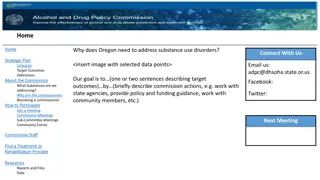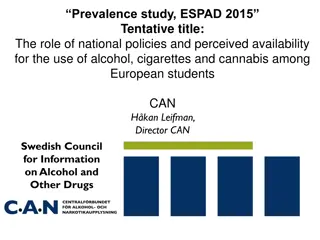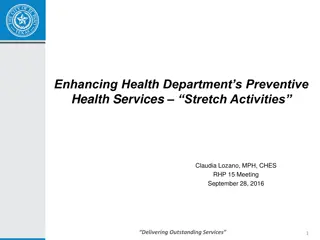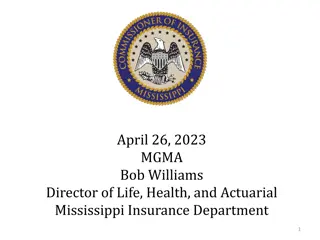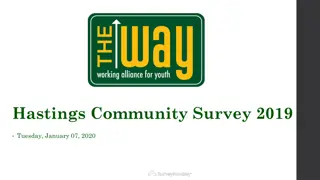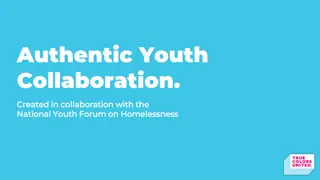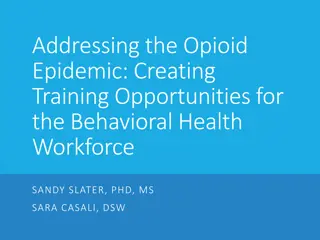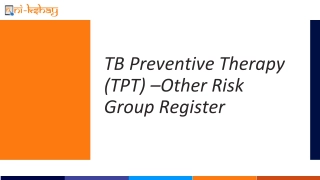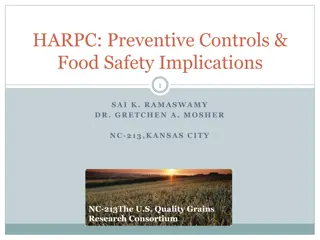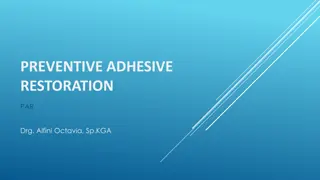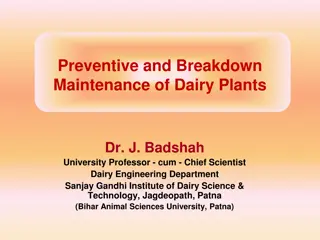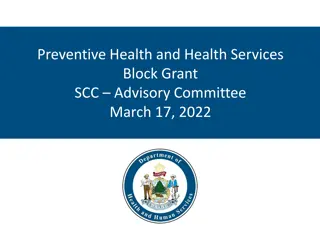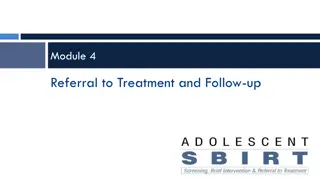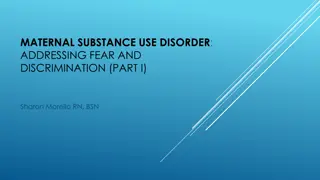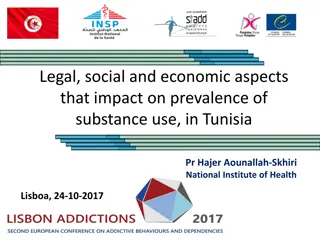Preventive Approach to Addressing Youth Substance Use: SBIRT Tool Presentation
The presentation by Dawn A. Randolph highlights the importance of preventive approaches in addressing youth substance use. It emphasizes the need for early identification and intervention to ensure a better future for children and teenagers in Georgia. Substance abuse disorders affect millions of individuals, underscoring the urgency for public health initiatives to curb risky behaviors. Collaborative efforts between organizations like GCSA and GHF aim to provide comprehensive strategies and support to prevent substance abuse among the youth population.
Download Presentation

Please find below an Image/Link to download the presentation.
The content on the website is provided AS IS for your information and personal use only. It may not be sold, licensed, or shared on other websites without obtaining consent from the author. Download presentation by click this link. If you encounter any issues during the download, it is possible that the publisher has removed the file from their server.
E N D
Presentation Transcript
SBIRT a tool A Preventive Approach to Address Youth Substance Use Presented by Dawn A. Randolph, MPA Public Policy Consultant, Georgia Council on Substance Abuse www.gasubstanceabuse.org Presented to the House Study Committee on Childrens Mental Health - HR 641 Chaired by Representative Katie Dempsey
Incident of Substance Abuse Disorders The Need Untreated Abuse/Dependent ~ 25 million = 8% Harmful Users ~60,000,000 Abstinent & Non-Problem Users ~ 83% 2008 National Survey on Drug Use & Health US Population = 309,800,000
The Need - Prevention A Public Health Approach to Prevent Problem Substance Use The Need: Every kid and teenager in Georgia deserves a shot at a great future. Too often, that future is put in jeopardy when we miss opportunities to identify and treat early alcohol and drug misuse. One in 7 (40 million) Americans over the age of 12 have a substance use disorder. That s more than have heart conditions (27 million), diabetes (26 million) and cancer (19 million). One-third of all inpatient hospital costs are linked to addiction and risky substance use. 9 out of 10 people with addiction started using substances before they turned 18. People with drug dependence die an average of 22.5 years sooner than those without a diagnosis.
The Need Substances impacts young brains Young brains are vulnerable prevention and early intervention is key 90% of adult Americans with a substance use disorder began smoking, drinking or using other drugs before they were 18 and half before they were 15. Nearly one out of every five high school students in Georgia reported drinking more than just a few sips of alcohol before they were 13. Adults should begin talking to kids about drugs and alcohol when they start using them, not years down the line. Heroin use among teens and young adults in Georgia is on the rise. We need to have thoughtful, honest conversations with teens and young adults to prevent heroin addictions and deaths.
The Need: The Need
The Need Joining together GCSA & GHF Team-up What We Are Doing: Georgians for a Healthy Future and the Georgia Council on Substance Abuse have joined together to make sure that substance abuse prevention services are widely available to kids, teens and young adults in our state We have brought together a public health approach uniting young people, families, communities and professionals to develop an implement a comprehensive strategy. We are addressing and breaking down barriers to both celebrate the good things youth are doing while providing support to those who are engaging in risky behavior. Public Health, Medicaid and schools are important entreesin the provider network to reaching all kids.
How We Do It A Public Health Approach to Prevent Problem Substance Use SBIRT Multi-Dimensional Screening Substance Abuse Severity Depression Anxiety ADHD School Peers Legal Source: Ken Winters, Ph.D., Dept of Psychiatry, Univ of Minnesota, July 17, 2014
How We Do It A Public Health Approach to Prevent Problem Substance Use SBIRT Common elements of Brief Intervention Negotiated goals Motivational interviewing Cognitive-behavioral therapy (CBT) Source: Ken Winters, Ph.D., Dept of Psychiatry, Univ of Minnesota, July 17, 2014
How We Do It A Public Health Approach to Prevent Problem Substance Use SBIRT Referral to Treatment Favorable outcome Support Recovery Minimal/no change Conduct booster or refer to more services Problem worsens Refer to more services Multi-screen red flags Refer more assessment Source: Ken Winters, Ph.D., Dept of Psychiatry, Univ of Minnesota, July 17, 2014
How We Do It A Public Health Approach to Prevent Problem Substance Use
How We Do It A Public Health Approach to Prevent Problem Substance Use Georgia Workforce Poised for SBIRT Dissemination 13 years of training projects >2,600 students/residents & 118 faculty in medicine, nursing and PA programs across Georgia & nearby states Follow-up interviews indicate these trainees use SBI after graduation Opportunities to accelerate use of this important preventive service by turning on and funding SBIRT codes
How We Do It A Public Health Approach to Prevent Problem Substance Use SBIRT Patients Decreased Substance Use Baseline to 6 Source: Georgia Basics Final Report
How We Do It A Public Health Approach to Prevent Problem Substance Use Greater Decreases in Binge Drinking for SBIRT vs. Control Patients Source: Georgia Basics Final Report
How We Do It A Public Health Approach to Prevent Problem Substance Use Mental Health Improvements in Quality of Life Source: Georgia Basics Final Report
Our Vision Lets Do This! Healthy Future for All Now that you know what SBIRT is, let s examine how it helps. Screening is a key step in preventing young people from misusing drugs and alcohol. Identifying young people who use alcohol, drugs or both is a very important first step in preventing their misuse. In fact, studies show simply asking young people about drugs and alcohol can lead to positive behavioral change. Brief Interventions just a few minutes of counseling reduce alcohol problems in people 18 and older. Studies demonstrate that these short counseling sessions, conducted in all types of settings from emergency departments, to trauma centers, to doctor s offices, cut the number of drinks consumed.
Our Vision Lets Do This! Healthy Future for All Now that you know what SBIRT is, let s examine how it helps. In young people, brief interventions reduce alcohol misuse. There is a growing body of research supporting the use of brief interventions in schools, primary care offices and hospital emergency departments to address alcohol use among young people. Young people respond to counseling by drinking less often and reducing the number of drinks consumed at one time. Brief interventions help college students cut back their drinking by an average of six drinks per week. Brief interventions also ease alcohol-related consequences. In one study of teens ages 14-18, brief counseling led to a 30 percent reduction in alcohol consequences, such as skipping school or fighting with friends and family because of alcohol.
Our Vision Lets Do This! Healthy Future for All Now that you know what SBIRT is, let s examine how it helps. Brief interventions can help curb drug use among young people. Recent studies show brief interventions delivered in a primary care office, emergency department, or school setting reduce marijuana use among adolescents. In one study, short counseling sessions led young people ages 14-21 to use marijuana four fewer days per month. SBIRT Saves Lives and Cuts Costs Study after study proves that for every dollar invested into substance abuse treatment $4 is saved in healthcare related costs and $7 in law enforcement and criminal justice costs.
Our Vision Lets Fund It Prevention & Early Intervention = Healthy Futures Policy Recommendation encourage and incentivize greater use of SBIRT Activate Medicaid Codes for SBIRT More than half of Georgia s youth are enrolled in Medicaid & PeachCare SBIRT reimbursement codes exist for Medicare, most private insurance plans and Medicaid Medicaid Codes must be active for providers to utilize for billing Georgia is only one of 12 states whose Medicaid Codes are not active - See map on Page 15 of Policy Brief.
Our Vision Lets Fund It Prevention & Early Intervention = Healthy Futures Policy Recommendation Steps to SBIRT go live Step 1 Identify Billing Codes CPT Codes 99408 in 15-30 minute increments for screening & brief intervention 99409 30 minutes or greater for screening & brief intervention Source: SAMHSA http://www.samhsa.gov/sbirt/coding-reimbursement Step 2 Define providers Authorize the set of providers listed under Medicare guidelines to bill for SBIRT services in Medicaid Plan, with a view toward including additional providers in the future.
Our Vision Lets Support It Prevention & Early Intervention = Healthy Futures Policy Recommendation Steps to SBIRT go live Step 3 Define delivery settings Authorize SBIRT services in emergency departments, primary care offices and school settings. This is where the kids are Step 4 Define age to begin screening Provide SBIRT coverage for individuals age 12 and older. This is when data show kids start using
Thank YOU! A Preventive Approach to Address Youth Substance Use
